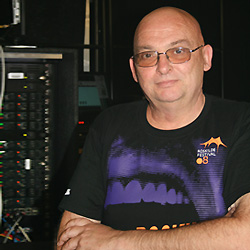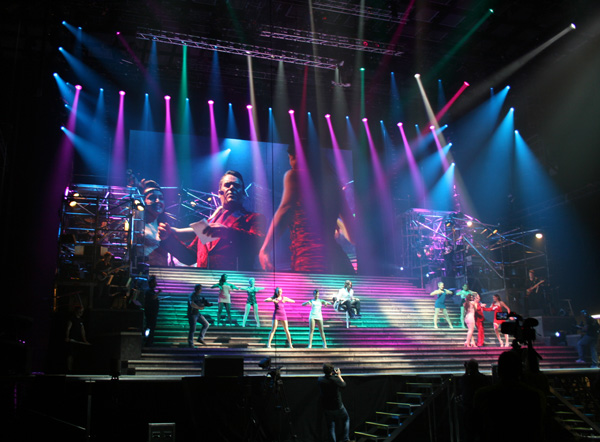British RF engineer Barry Macleod has had a long and distinguished career in rock ‘n’ roll, looking after wireless systems at major international events such as Live 8 and Live Earth, as well as a plethora of BRIT Awards and MTV Awards ceremonies.
I recently spoke with him about his latest project, the touring version of Andrew Lloyd Webber’s Jesus Christ Superstar (JCS), which will hit U.S. arenas in the coming months.
Paul Watson: The JCS tour required 50 channels of wireless systems; why was that, exactly, and what was your core setup?
Barry Macleod: We had so many channels because I used 42 simultaneously and needed to also have 22 in-ear systems running all the time. The extra eight channels gave me the flexibility to slot extra stuff in when required from venue to venue. It was mainly Shure equipment — (UHF-R Series) UR1 and UR1Ms bodypack transmitters, G3 handhelds, and then Shure PSM1000 (personal monitor systems).
As video screens continue to become more prevalent in all types of productions, they also seem to be taking up more and more RF; are they becoming increasingly problematic to your workflow?
Absolutely! On JCS the video screen was producing a huge amount of RF. Because manufacturers are making these screens out of plastic so they can hang huge amounts of them, there is no screening of the power supplies and components whatsoever; we did try and work with XL Video (the video company on the tour) to try and make it better, but whatever we did never cured it.
How do you get around the problem?
We localized more antennas around the stage so that no one was more than seven or eight meters away from an antenna. It was important that none of the antennas were pointing at the screen, because they reject stuff from the back. And then I put my cunning plan into action…
…And what was that?
An idea I’d had up my sleeve for some time, actually. Using Shure Wireless Workbench and AXT600 Spectrum Manager, I effectively managed to get a scan of what the screen was doing. This allowed me to go to a venue, scan the venue, then superimpose the screen on top – that was my starting point.
From there, I used Sennheiser AC3 antenna combiners, but in quite a different fashion: I put antennas on the inputs and ran the output to the receivers, and tried to keep the gain as low as I could. I also deployed Sennheiser AB3700 antenna boosters and some Shure boosters too, which were always the last part of the chain, so any gain was put in after it had been gain-reduced by the cable length. Thankfully, it worked!
Do you have a general rule of thumb when it comes to preparing for a major show?
Well, I always say everything has to be right in the whole chain – believe it or not, a little bit of dodgy BNC cable with the pin pushed back 2 mm can be enough for the whole thing to go absolutely wrong. It’s all about attention to detail: every part of your rack and every part of what you do has to be right.
You play around with antenna positions to get them right for your show, then you identify the issues that are around and try to circumvent them or do something to make them less of an issue.
What is the current state of the industry in the UK, and how does it differ from the European market?
Well, for a start, the UK bases everything it does on TV channels; the area we go into is also occupied by TV broadcasters. In the U.S. and Japan, they use 6 MHz (wide) TV channels, but in Europe we are predominantly using 8 MHz (wide) channels.
In the main of Europe, we’re quite organized in that we have major TV companies that broadcast digital TV; if you get permission to start up your own TV station, you take that to a company who will then broadcast that for you for a fee.
The same happens in France and Germany, but there are a couple of countries that aren’t like that. The one that sends a shiver down the spine is always Italy. [laughs] Over there, if you start up your own TV station, you stick your transmitter on your roof and away you go, and you broadcast to a local area.
Radio mics and IEM systems in Italy always have been and always will be a nightmare as a result. Put it this way, I have scanned there and seen everything: from 530 MHz all the way up to 750 MHz, digital TV on top of digital TV on top of digital TV, and there is literally nowhere to go, spectrum-wise.





















